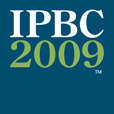The Innovation Alliance, a coalition claiming to be committed to improving patent quality while protecting and promoting innovation, claims that the court system has taken up patent reform on its own making it more difficult for innovators to obtain and enforce patent rights and thus making patent reform moot.
The group claims that when patent legislation was first introduced in 2005, advocates argued that the patent system was out of balance, with lax standards that yielded weak or overly broad patents and harsh remedies that gave so-called patent speculators too much bargaining power.
Since that time, a series of U.S. Supreme Court and Federal Circuit decisions have shifted the balance of power between patent holders and users, changing standards of patentability and narrowing patent rights and remedies. The Innovation Alliance is now urging Congress and the current Administration to consider carefully the impact of these decisions before rushing to enact patent legislation that may further weaken our knowledge-based economy.
The Innovation Alliance has a fact sheet summing up the changing case law since 2006 as follows:
eBay Inc. v. MercExchange LLC, 547 U.S. 388 (2006) (reversing Federal Circuit)
Permanent injunctions: Rejected “categorical rules” favoring or disfavoring permanent injunctive relief following a nonappealable judgment of infringement. In all cases, courts must retain equitable discretion to consider the merits of a request for permanent injunctive relief based on the traditional “four factor” test.
KSR v. Teleflex, 550 U.S. 398 (2007) (reversing Federal Circuit)
Obviousness: Rejected, in part, the Federal Circuit’s “TSM test,” which conditioned obviousness on a specific finding of some motivation, teaching or suggestion to combine prior art teachings, in the particular manner claimed. The Supreme Court left intact the TSM test as a general standard for evaluating obviousness but held that TSM is not the exclusive test for establishing obviousness. Instead, the Court endorsed a flexible and expansive approach to the obviousness inquiry in lieu of any rigid or narrow formula. By making it easier to establish obviousness, KSR makes it more difficult to obtain patent protection in the first instance, and tougher to defend against invalidity challenges post-issuance.
MedImmune v. Genentech, 549 U.S. 118 (2007) (reversing Federal Circuit)
Declaratory judgment suits by licensees: Held that a licensee need not terminate or breach a patent license agreement before it can bring suit to obtain a declaratory judgment that the patent is invalid, unenforceable or not infringed. The Court rejected Federal Circuit precedent that a patent licensee in good standing cannot seek a DJ without first repudiating its license agreement.
Microsoft v. AT&T, 550 U.S. 437 (2007) (reversing Federal Circuit)
Extraterritorial enforcement of U.S. patents: Held that a master software disk that is exported and then used by foreign computer manufacturers to install software at the point of assembly is not a component within the meaning of Section 271(f) of the Patent Act. Section 271(f) allows the holder of a U.S. patent to block the export from the United States of components that can be assembled abroad to produce an infringing product, even though the patent is not enforceable in the place where that assembly takes place.
Quanta Computer v. LG Electronics (2008) (reversing Federal Circuit)
Scope of patent exhaustion defense: Held that the patent exhaustion defense applies (i) to patented method claims, and (ii) when the authorized/licensed sale of a product substantially embodies a patented invention.
In re Seagate Technology, 497 F.3d 1360 (Fed. Cir. 2007)
Willfulness standard: Abandoned long-standing Federal Circuit precedent imposing an affirmative duty of care on accused infringers, and held that willful infringement requires at least a showing of objective recklessness.
In re Bilski, 88 USPQ2d 1385 (Fed. Cir. 2008)
Subject matter eligibility of software/business methods: Narrowed the scope of patent-eligible software/business method patents under Section 101 to methods that are either tied to a particular machine or apparatus or that transform a particular article into a different state or thing (the “machine or transformation test”). Bilski will make it more difficult to obtain patents for such methods and tougher to defend method patents against invalidity challenges and, in the process, drag in non-software/business method inventions including pharmaceutical and biotechnology patents.
In re TS Tech, Misc. No. 888 (Fed. Cir. 2008)
Venue: Ordered transfer of venue from the Eastern District of Texas to the Southern District of Ohio. The fact that vehicles containing the allegedly infringing article are sold in the Eastern District of Texas does not provide a meaningful connection with the venue since such vehicles are sold throughout the United States. Product sales are often the sole basis for asserting venue in this district.
So, what does this mean? Is patent reform already enacted?


 Entrepreneur and self-promoter
Entrepreneur and self-promoter  From 21st to 23rd June 2009, the
From 21st to 23rd June 2009, the 